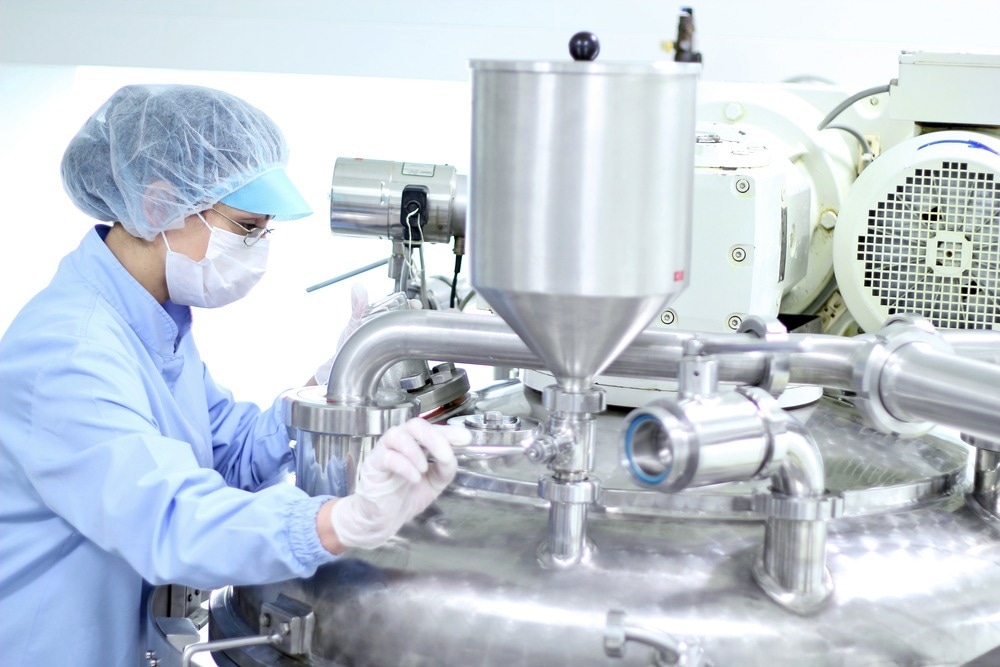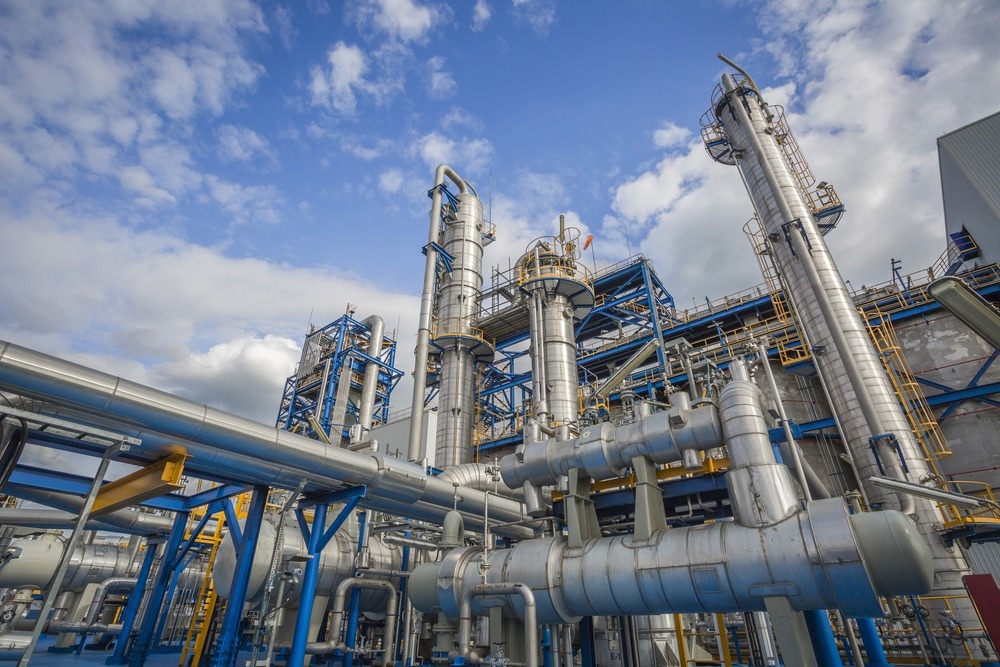The development of nanomaterials has revolutionized various fields, including catalysis, playing a crucial role in driving chemical transformations. Nanocatalysts, which are catalysts with nanoscale dimensions (below 100 nm), exhibit unique properties and are highly viable options not only for research applications but also for industrial catalytic processes.

Image Credit: RGtimeline/Shutterstock.com
Introduction to Nanocatalysts in Industrial Chemistry
Common nanocatalysts include carbon-based nanomaterials (fullerenes, graphene, carbon nanotubes), metals (in particular Fe, Ag, Au, and Co), oxides like ZnO and TiO2, and other nanomaterials such as quantum dots.
Some nanoparticle-based catalysts, especially those with noble metals (i.e., Au nanoclusters, Pd and Pt nanoparticles, etc.), have already been applied in various industrial sectors such as refineries, petrochemical plants, food processing, and environmental remediation.
Among these applications, their use in environmental catalysis is of significant importance due to their ecological value. For instance, nanocomposites such as Fe3O4@SiO2–Ag, Au@SiO2, Au/TiO2, and many other noble metal nanocatalysts have been used for water treatment.1
Advantages of Nanocatalysts Over Conventional Catalysts
Nanocatalysts offer several advantages over their conventional counterparts, making them highly desirable for industrial applications. Thanks to their high surface area-to-volume ratio, there are more active sites available for reactions to occur, which translate into increased catalytic activity and, therefore, higher reaction rates and improved efficiency.2,
Their properties are size-dependent and can be finely tuned to control reaction pathways, enabling precise control over the desired chemical outcome. This feature is particularly valuable in industries where product purity and yield are critical factors. It is also possible to regulate the catalytic activity and selectivity of nanocatalysts by tailoring their chemical and physical properties.
Nanocatalysts possess strong mechanical strength and high resistance to temperature and organic solvents. In addition, they often demonstrate enhanced stability and durability, with prolonged lifespan and reduced need for catalyst replacement, leading to cost savings and greater sustainability in industrial operations.
Applications of Nanocatalysts in Industrial Processes
The versatility of nanocatalysts makes them suitable for a wide range of industrial applications across various sectors. In the petrochemical industry, for instance, nanocatalysts can be used in processes such as hydrogenation, dehydrogenation, and hydrocracking for the production of fuels and chemicals.
Nanocatalysts are particularly attractive in the synthesis of complex molecules and intermediates in the pharmaceutical industry. Their ability to facilitate selective bond formations and chirality control is instrumental in the development of novel drugs.
Furthermore, nanocatalysts promote chemical reactions that degrade harmful pollutants and find applications in environmental remediation processes, such as wastewater treatment, with several modified forms of metal oxides already successfully tested. In particular, metal oxide nanoparticles such as ZnO, TiO2, and CeO2 have been widely studied to degrade contaminants in aqueous solutions.
In catalytic advanced oxidation processes (AOPs), surface reactions are essential for the effective degradation of pollutants because active surface sites interact with oxidants such as ozone and hydrogen peroxide, producing hydroxyl radicals. The large specific surface area and high density of active sites are essential properties of nanocatalysts in AOPs to effectively degrade and remove pollutants.3
Moreover, magnetic nanoparticles have attracted increasing interest in nanocatalysis and have been applied in important reactions such as Suzuki-Miyaura and Heck couplings. The use of magnetic nanoparticles also facilitates the separation of the nanocatalysts from the bulk.4

Image Credit: Photo smile/Shutterstock.com
Enhanced Efficiency and Selectivity Enabled by Nanocatalysts
One of the key advantages of nanocatalysts is the ability to enhance both the efficiency and selectivity of chemical reactions. Their small size and high surface area facilitate the mass transfer and contact between catalysts and reactants, leading to faster reaction kinetics and higher productivity.5
The possibility to influence reaction pathways and product distributions, particularly beneficial in complex multistep reactions, allows for the selective synthesis of desired compounds while minimizing the formation of unwanted products.
The catalytic performance is also influenced by the shape and geometry of the participating entities. Different nanoparticles may exhibit different morphology and electronic states; as such, the same reaction could display different activities and selectivity depending on the nanocatalyst used.6
Moreover, compared to conventional catalysts, nanocatalysts can operate under milder reaction conditions, reducing energy consumption and minimizing environmental impact. This is particularly relevant when considering sustainable industrial practices and green chemistry principles.
Future Trends and Developments in Nanocatalysis for Industrial Chemistry
The development and use of nanocatalysts are on a path of continued growth and innovation in industrial chemistry. Advances in nanomaterial synthesis, characterization techniques, and computational modeling are driving the design of nanocatalysts with enhanced properties and functionalities.
It is necessary to conduct extensive research to better understand the optimal reaction conditions and nature of active sites to make proper use of catalysts in practical situations outside of the laboratory. The integration of nanocatalysts with microreactors and continuous flow systems holds great potential for optimizing reaction conditions and scaling up processes.
One promising area is the development of multifunctional (or “smart”) nanocatalysts able to perform multiple catalytic reactions. These smart catalysts could streamline industrial processes, reduce waste generation, and improve overall efficiency.
Smart nanocatalysts obtained by incorporating thermo-sensitive polymers can also offer the possibility to control catalytic activity and reaction progress according to temperature changes, with great potential in hydrogen generation processes.7
In conclusion, thanks to their numerous advantages, the great potential across various industries, and ongoing advancements in nanoscience and catalysis, the use of nanocatalysts is continuing to grow in industrial chemistry.
References and Further Reading
- Jin, Q., et al. (2020) Smart paper transformer: new insight for enhanced catalytic efficiency and reusability of noble metal nanocatalysts. Chemical Science, 11, pp. 2915-2925. dx.doi.org/10.1039/C9SC05287A
- Jiang, C., et al. (2014) Mechanistic Understanding of Toxicity from Nanocatalysts. International Journal of Molecular Sciences, 15, pp. 13967-13992. Available at: https://www.mdpi.com/1422-0067/15/8/13967
- Masood, Z., et al. (2022) Application of Nanocatalysts in Advanced Oxidation Processes for Wastewater Purification: Challenges and Future Prospects. Catalysts, 12, p. 741. Available at: https://www.mdpi.com/2073-4344/12/7/741
- Veisi, H., et al. (2023) Recent advances in the application of magnetic nanocatalysts in multicomponent reactions. RSC Advances, 13, pp. 20530-20556. dx.doi.org/10.1039/D3RA01208E
- El-Boubbou, K., et al. (2022) Synthesis of novel hybrid mesoporous gold iron oxide nanoconstructs for enhanced catalytic reduction and remediation of toxic organic pollutants. RSC Advances, 12, pp. 35989-36001. dx.doi.org/10.1039/D2RA05990H
- Zhang, H., et al. (2013) Shape-controlled synthesis of Pd nanocrystals and their catalytic applications. Accounts of Chemical Research, 46, pp. 1783-94. doi.org/10.1021/ar300209w
- Xu, Y., et al. (2021) Smart nanocatalyst for ammonia-borane hydrolysis: Thermo-controlled hydrogen generation. International Journal of Hydrogen Energy, 46, pp. 14322-14330. doi.org/10.1016/j.ijhydene.2021.01.182.
Disclaimer: The views expressed here are those of the author expressed in their private capacity and do not necessarily represent the views of AZoM.com Limited T/A AZoNetwork the owner and operator of this website. This disclaimer forms part of the Terms and conditions of use of this website.